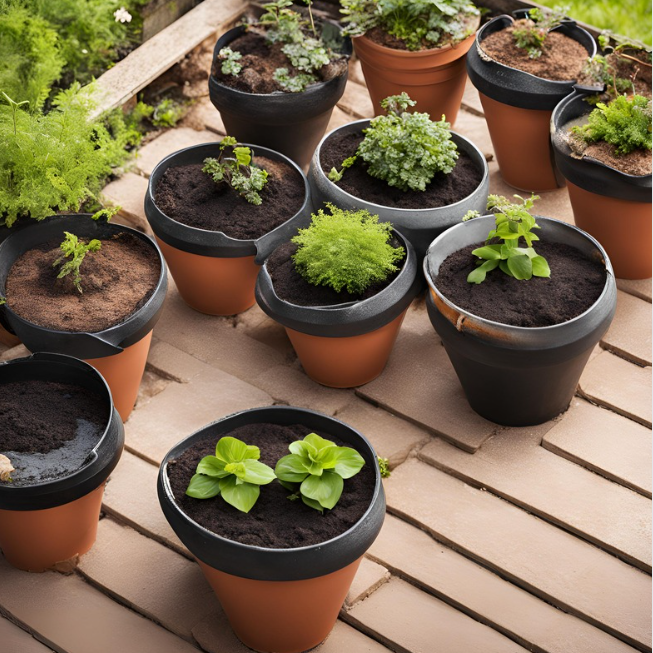Your precious plants may suffer damage due to improper handling during transportation. Whether it’s a short distance or long-distance move, you can find the most suitable handling methods in this article.
The principles of moving house are clear – pack up your belongings and wrap fragile items like picture frames and dishes in bubble wrap or biodegradable packing paper. But packing plants is another matter altogether. Plants are living things, and factors such as excessive shaking in transit, lack of moisture, or changes in light can all affect them adversely. Perhaps it’s for these reasons that many indoor plants end up being listed on second-hand websites or given away to friends.
Parting with your best green friends can be heartbreaking, especially those adorable succulents you’ve nurtured with care. But you don’t necessarily have to leave them behind. Before you transport your plants, take a moment to watch the trial-and-error method shared in Becca De La Plants’ moving plants tutorial video on YouTube. Pro tip – stacked plastic crates (or ventilated banana crates available from grocery stores) make excellent containers for low-growing potted plants. Then, read on for expert advice on three different scenarios suitable for your plant babies’ relocation.

How to Prepare Plants for Short-Distance Moving
You might be tempted to pack both indoor and outdoor plants together, but absolutely don’t! Jason White, founder and CEO of All About Gardening in Williamson County, Tennessee, advises that even if you’re moving to the other side of town, take precautions against pests. He says, “Instead, pack indoor plants separately from outdoor ones to prevent insects from crawling from one pot to another.”
To prepare plants for short-distance moving, you’ll need:
Magnifying glass
Neem oil (as needed)
Plastic nursery pots
Scissors or floral shears
Cardboard boxes or plastic crates
Packing paper
Step 1: Bug Hunt
According to White, start by carefully inspecting each outdoor plant with a magnifying glass for pests like scale insects and spider mites, especially around the soil perimeter. As needed, use neem oil to treat plants for pests. A simple method is to spray a light mist of oil on both sides of each leaf in the morning, then let the oil dry for at least 24 hours before moving the plants.
Step 2: Protect the Pots
Assess your pots and planters. White advises, “Don’t move with fragile pots.” Repot plants into shatterproof containers like plastic nursery pots 2 to 3 weeks before the move. If you’re short on time, wrap each pot in bubble wrap or place cardboard between pots to prevent them from knocking against each other. Wine bottle dividers work well.
Step 3: Trim Yellowing Leaves and Water
Melody Estes, landscape design horticulture manager at The Project Girl in Greenville, Maine, suggests trimming dead or yellowing leaves with scissors or shears. You may water your plants on the morning of moving day or before placing them in boxes, but make sure the soil isn’t too wet, as this can lead to root rot. Also, you don’t want plants sitting in stagnant water for too long, as the movement of the vehicle can cause soil and water to splash out.
Step 4: Find a Suitable Spot for Delicate Plants
Ensure your delicate plants are placed separately. For example, if you have a pot small enough to fit in the cup holder of your car, consider placing more fragile plants there. Otherwise, find a box that fits snugly to avoid excessive movement. Exercise judgment, but some plants, like string of pearls or other succulents, may not be worth moving due to their sensitivity to jostling and potential leaf loss. Others with shallow roots may also be too delicate for relocation.
Step 5: Use Open Boxes
For all other houseplants, make sure they’re placed in open boxes (meaning without lids) large enough to accommodate the planters. Larger plants may protrude from the top of the box when opened, and, like the more fragile houseplants, these plants should not have too much or any wiggle room. If necessary, stuff packing paper, filler, and cushioning between the planters and the sides of the box, filling any gaps as much as possible.
► How to Prevent Damage to Plants or Pots
Transferring plants to plastic nursery pots is an excellent way to ensure the safety of both plant and pot, but there are other options. James Mayo of Exubia, a London-based biophilic design company, explains that the way plants are grouped is important. He says, “Plants with stiff, elastic leaves like sansevieria or succulents won’t tangle or get entwined with other plants because they’re so rigid.” So you can place these plants together with plants prone to tangling, like palms, dracaenas, and ferns. Additionally, Carol Lang, leader of the full-service design firm Carol Lang Interiors in Fair Haven, New Jersey, suggests a nearly foolproof method to prevent pots from cracking: keep the plant and pot separate.

